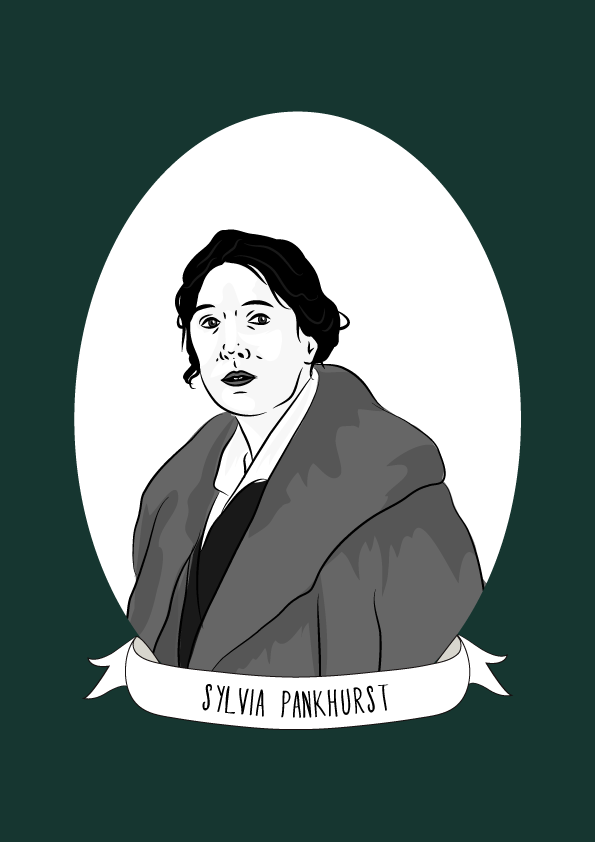Sylvia Pankhurst was an English campaigner for the suffragette movement and was imprisoned and force-fed more than any other campaigner.
Pankhurst was the daughter of prominient suffragette Emmeline Pankhurst. After training as an artist, first at the Manchester School of Art and then at the Royal College of Art she worked full-time for the Women’s Social and Political Union (WSPU) with her mother and sister, Christabel. Pankhurst designed the logo for the organisation, as well as designing leaflets and other promotional materials. She founded the East London Federation of the WSPU and contributed articles to the organisations newspaper.
During her time campaigning with the WSPU, Pankhurst was imprisoned many times for her activism and endured weeks and months of hunger, thirst, sleep strikes and force feeding in Holloway Prison.
In 1914, Pankhurst was expelled from the organisation after becoming increasingly dissatisfied with the direction the organisation was taking. She disagreed with the decision to campaign for limited suffrage (focusing on votes for middle-class white women specifically) and would have prefered for the organisation to be more explicitly socialist.
Pankhurst founded the East London Federation of Suffragettes (ELFS), which worked closely with the Independent Labour Party. The organisation later became the Women’s Suffrage Federation (WSF) and finally the Workers’ Socialist Federation as it evolved.
During WWI, Pankhurst formed the Women’s Peace Army in response to her mother and other suffrage campaigners support for the war. Pankhurst joined forces with Dr. Barbara Tchaykovsky to open four mother-and-baby clinics in London during the war.
Pankhurst and the WSF became increasingly left-wing, and began publishing the Women’s Dreadnought (later the Worker’s Dreadnought) to promote its ideals. The WSF hosted the inaugural meeting of the Communist Party (BSTI), which would later be combined with the Communist Party of Great Britain (CPGB). As part of this merger, the leader of the CPGB demanded that Pankhurst relinquish control of the Worker’s Dreadnought. She refused, and was exiled from the party, only to found the short-lived Communist Workers Party.
In the 1930’s, Pankhurst became involved more in anti-fascist and anti-colonialist movements. She helped to establish the Socialist Workers’ National Health Council, became a supporter of Haile Selassie and his fight against colonialism following the Italian invasion of Ethiopia and fundraised to open the first teaching school in Ethiopia.
Upon her death, she was honoured with a full state funeral in Ethiopia at the request of Selassie himself.
